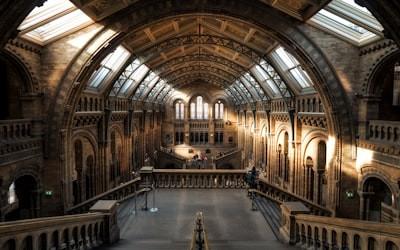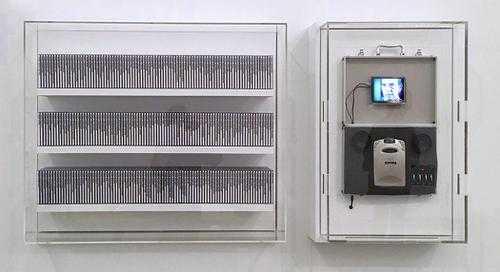Explore the World's Best Ideas
Join today and uncover 100+ curated journeys from 50+ topics. Unlock access to our mobile app with extensive features.
The importance of Non-Fungible Tokens (NFT)
An NFT is a unique asset and can represent any digital asset on the Ethereum blockchain. This makes it scarce, provable, and valuable.
It can take the form of digital art, collectables, a creative extension of music, or a blend of all three.
Anyone can create an NFT. As long as individuals can prove they created or legally own the content, they can mint an NFT.
36
411 reads
NFT is a tool to authenticate an artist's work
NFTs presents a new medium for artists and creators to showcase and monetize their creations. In turn, collectors have transparency into the authenticity and origin of their purchases.
While you can screenshot an NFT without purchasing it, you would not be able to sell it at the value of the original. Every time the NFT moves on the secondary market, the new owner and the purchase price is automatically recorded on a blockchain for everyone to see. Ultimately, you are not buying the picture - you're buying the property rights to the picture.
36
456 reads
The first NFT
The CryptyArt category was started by cultural phenomena like CryptoPunks, Rare Pepe, and CryptoKitties. The viral network effects and the desire to buy these pieces helped these pieces of art to gain fame.
On May 3rd, 2014, Kevin McCoy minted his non-fungible token "Quantum" long before the crypto art market exploded. The "Quantum" art piece (2014-2021) is on sale for seven million dollars.
36
388 reads
The early history of NFT
- 2012-2013: Colored Coins. These are tokens that represent real-world assets on the blockchain and can be used to prove ownership of any asset, from cars to real estate. The idea was to use the Bitcoin blockchain.
- 2014: Counterparty platform. Counterparty, a peer-to-peer financial platform, allowed asset creation and had a decentralized exchange, enabling users to create their own tradable currencies.
- 2015: Spells of Genesis on Counterparty. Counterparty partnered with Spells of Genesis. They were pioneers for issuing in-game assets onto a blockchain via Counterparty and also launched an ICO.
39
326 reads
History of NFT: New trends
2016: Trading Cards on Counterparty. Counterparty teamed up with Force of Will, a trading card game, who launched their cards on the Counterparty platform.
2016: Rare Pepes on Counterparty. Memes entered the blockchain and made their way onto the Counterparty platform. People started to add assets to a meme called "Rare Pepes." By early 2017, Rare Pepes started to be traded on Ethereum as well. CryptoArt was born with the Rare Pepe Wallet. Now any creator could submit and sell their artwork.
35
374 reads
2017: Cryptopunks
John Watkinson and Matt Hall developed unique characters on the Ethereum blockchain, limited to 10,000.
The project name, Cryptopunks, was referenced to an experiment with Bitcoin in the 1990s.
- ERC20 is the most common Ethereum Token Standard that allows tokens to interact.
- ERC721 is the standard for NFTs on the Ethereum blockchain. It helps track ownership and movements of individual tokes from a single smart contract.
CryptoKitties NFTs use ERC721. They are a blockchain-based virtual game that allows players to breed and trade virtual cats using Ethereum.
40
281 reads
2018-2021: The NFT Explosion
Between 2018 and 2021, NFTs moved into public awareness before mainstream adoption in early 2021.
The NFT market is more efficient and liquid than current methods of transferring assets.
- Opensea is the largest marketplace for art, music, domain names, collectables, and trading cards.
- Minable's platform focus on making the minting process easy for creators.
- Portion is an NFT platform that bridges NFTs, DeFi, and DAOs where the holders of the governance token $PRT are in charge.
- Niftex allows users to buy fractions of NFTs or "shards", which are ERC20 tokens.
40
286 reads
IDEAS CURATED BY
CURATOR'S NOTE
NFTs provide a bright future. Any artist can and should tap into this powerful blockchain technology to reach new audiences that are excited to collect and appreciate their work.
“
Eric Bright's ideas are part of this journey:
Learn more about crypto with this collection
How to create and sell NFTs
The future of NFTs
The benefits and drawbacks of NFTs
Related collections
Similar ideas
10 ideas
Understanding the Different Types of NFTs
101blockchains.com
8 ideas
16 ideas
Creating Your First NFT: A Beginner’s Guide to Minting NFTs
mastercreta07.medium.com
Read & Learn
20x Faster
without
deepstash
with
deepstash
with
deepstash
Personalized microlearning
—
100+ Learning Journeys
—
Access to 200,000+ ideas
—
Access to the mobile app
—
Unlimited idea saving
—
—
Unlimited history
—
—
Unlimited listening to ideas
—
—
Downloading & offline access
—
—
Supercharge your mind with one idea per day
Enter your email and spend 1 minute every day to learn something new.
I agree to receive email updates




